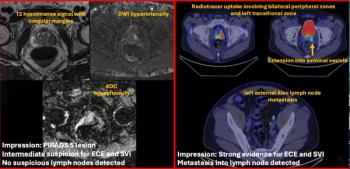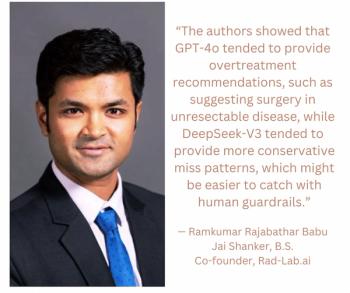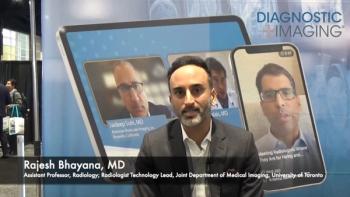
Current Insights on Interoperability, Enterprise Imaging and AI Integration in Radiology
In a recent interview, Morris Panner offered his perspective on cultural hurdles to interoperability in health care, emerging trends with enterprise imaging and an answer first approach to integrating AI in radiology.
The ongoing trend toward utilizing artificial intelligence (AI) for workflow optimization may represent “the most profound change for radiology,” according to Morris Panner, the president of Intelerad Medical Systems. However, in a recent interview with Diagnostic Imaging, Panner said a fundamental key to successful integration of AI starts with the answer of what you want it to accomplish.
“ … The challenge around integration is the following one: Where in the workflow do you want to integrate (AI) and what is it that you're trying to integrate? Are you trying to integrate prioritization? Are you trying to integrate measurements? Are you trying to integrate dictation? … What are your aspirations and what are your goals?,” posited Panner. “In some ways, I think with any new hot technology, the technology becomes the answer, and that really should never be the case. What you should start with is: ‘What is the answer? What do you want to do?’”
Panner maintained that AI is one piece of the larger puzzle for a profession striving for improved interoperability.
“It’s so dynamic today. At one point, I spoke to a radiologist who said, ‘We are all teleradiologists.’ In other words, they need to be able to work remotely. They need to be able to work in a lot of different care settings, because those care settings are expanding outside of the hospital,” pointed out Panner. “ … If you think about all the systems that now come into play around radiology, whether that's patient data from an electronic health record (or) increasing use of algorithms, whether it's for workflow or diagnostics, all of that has to get integrated.”
Panner said a number of cultural barriers thwart communication between different institutions in health care. These cultural barriers may include “cultural reticence (about) doing the wrong thing” with respect to appropriate communication channels between clinicians, professional pride and incentives to keep patients within a given health-care system, according to Panner. He suggested that cloud-based systems may help break down some of these barriers and silos.
“I think all of us in the industry are pushing towards (the) cloud, and one of the reasons why I think it's been so well received among our customers is that once you're in the cloud, you're able to get to a level of abstraction that enables you to use APIs (application programming interfaces) more agilely outside of just your proprietary network,” noted Panner.
(Editor’s note: For related content, see “
For more insights from Morris Panner, watch the video below.
Newsletter
Stay at the forefront of radiology with the Diagnostic Imaging newsletter, delivering the latest news, clinical insights, and imaging advancements for today’s radiologists.




























